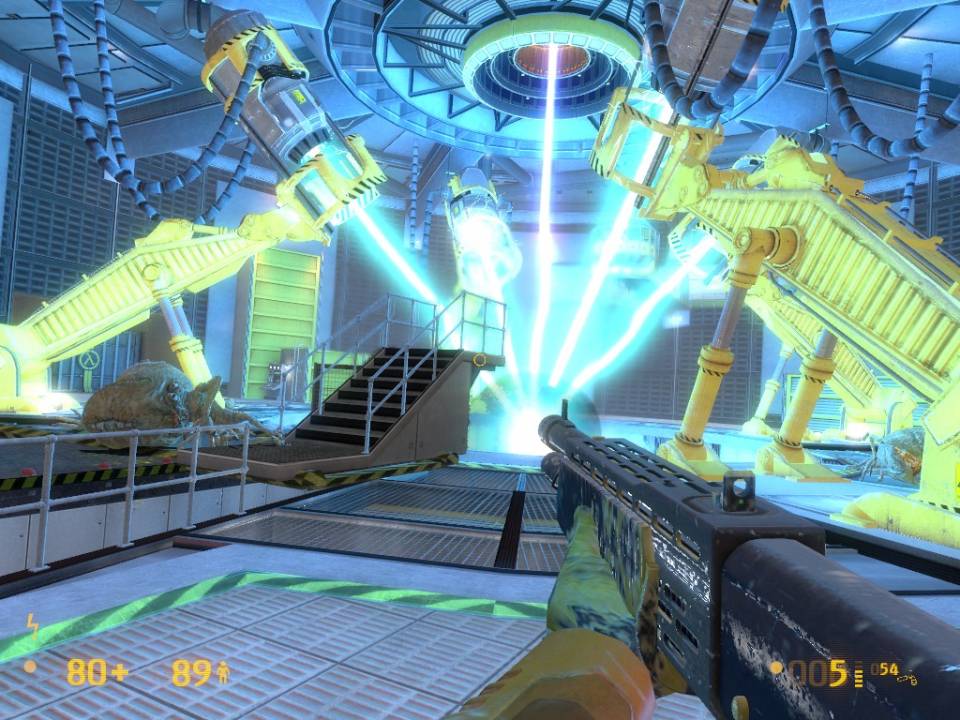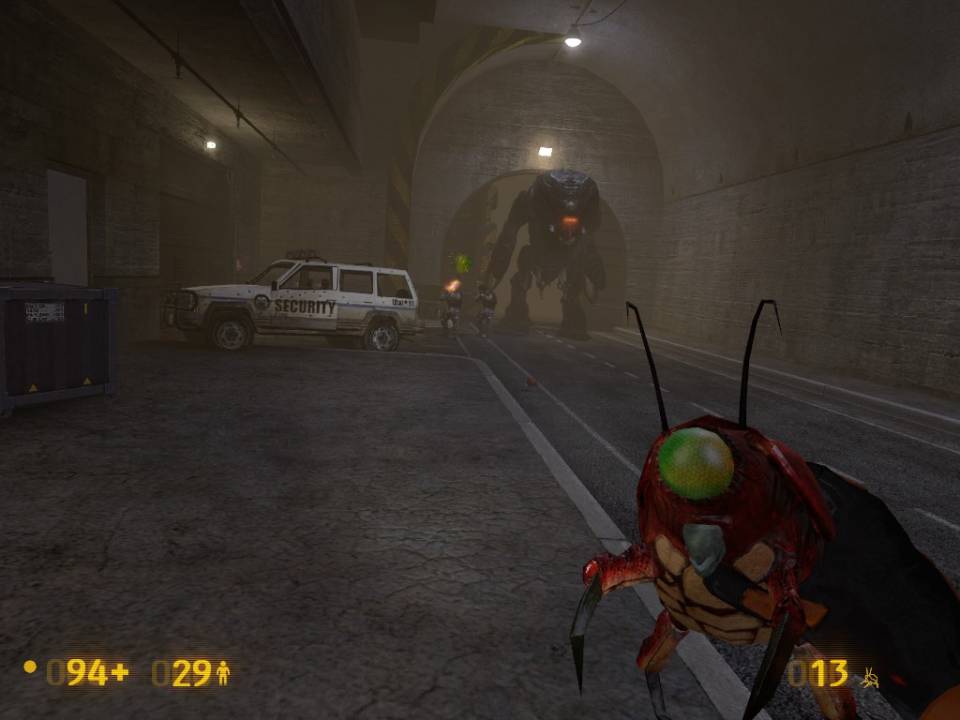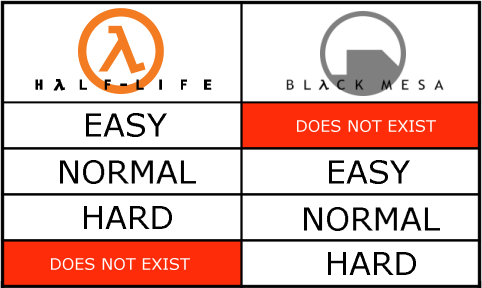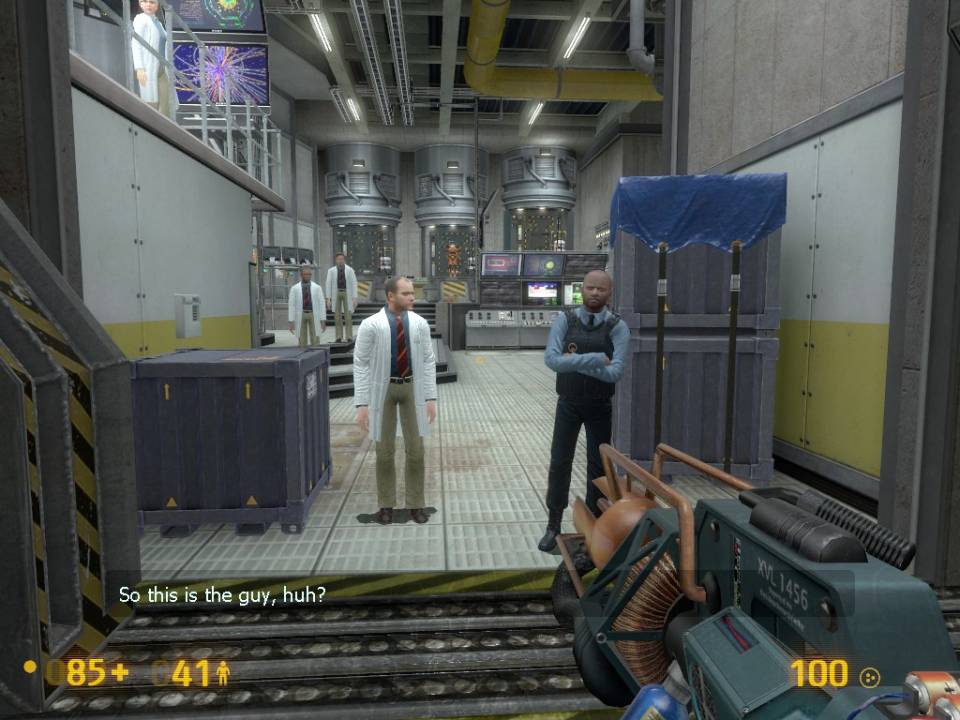Final Thoughts: Black Mesa Source
By BlazeHedgehog 1 Comments
It was more than a week ago that I left off with Black Mesa Source; I had a Jet Set Radio HD review to write, and I'm the kind of person whom, when there is work to be done, it's kind of all I can focus on. I more or less refused to let myself play anything other than Jet Set Radio HD until I was finished with my review, so with that finally out of the way, I started two things: preparing for my next video review (it's going to be a doozy if it pans out), and resuming Black Mesa Source.

I wrote some preliminary words about the first three hours, but now that I've finished the game, I can definitively say...
This game is too difficult. There's a reason the default difficulty is "Easy", and that's because "Normal" difficulty is for crazy people - I can't even imagine how anybody would be able to contend with "Hard" mode.
People will tell you that Half-Life is not a run-and-gun game like Doom, or Quake, and that's absolutely true. It's actually rather remarkable just how tightly Black Mesa Source holds to the themes that separated the original game from the shooters of its era - and not only does it hold to them, it intensifies them. Half-Life was a much more logical, believable, and realistic game than shooters to come before it. It wasn't just a collection of maps, it was a living, breathing location. Whereas Quake would have a hallway because that makes good level design, Half-Life had hallways because that made real-world architectural sense. But it was still a video game, in a lot of ways. Black Mesa Source takes the sometimes-simplistic or still-slightly-nonsensical Half-Life maps and fully realizes them. Empty walls are now covered in what look to be functional electronics, and any questions of "Why is this thing here?" are answered because Black Mesa as a place makes more sense now.
That translates to characters, too. One of the best, most insignificant touches in this game is how Gordon himself becomes splattered with various fluids. In all of the Half-Life games, no matter what you do, your arms always stay in pristine condition. The walls could be splattered with blood or slime floor to ceiling and you are apparently still clean. In BM:S, close-encounters with aliens and humans alike leave marks not just on the environment, but on you, too. At some point it began producing this amazing mental image of a haggard and tired Gordon Freeman staggering in to the final Lambda laboratory a broken mess, covered in burns, bullet holes, and various unmentionable fluids ( sort of like this). It's that little extra touch of reality that goes a long way to grounding you in that world in a way the original version of Half-Life (or indeed, any version) did not.
But, perhaps in that transition, something about the world became too real. I had a few reactions around the web to my previous blog and my complaint that BM:S was too difficult. A lot of people told me that Half-Life was a game about being resourceful and making smart, tactical decisions - and that is absolutely, without a doubt true. But that's not Black Mesa Source, unfortunately.

Enemies often see you before you see them. That's a big problem, because most of them immediately start attacking. Before you even know what's happening, your health is dropping at an alarming rate, likely because these enemies are also far more accurate than you are - even though they are largely using the same weapons, somehow, 100% of their shots hit versus a 50% hit rate on your gun. You can hold a maximum of 150 rounds for your SMG/Pistol (they share the same ammo pool), and on Normal difficulty, it's not uncommon to waste a fourth of a clip on just one soldier. One soldier in a squad of at least five or more. And they all have total accuracy. Dealing with a scenario like that is just one giant headache in a way that it shouldn't be.
Remember: I am not some newbie, here. I have played the original Half-Life dozens of times; it is one of my favorite games basically ever. I know what Half-Life is "about". I know how to play the game "properly". And the strategies you used to get through HL1 on higher difficulties simply do not apply to BM:S. In my experience, the comparison between difficulty in HL1 and BM:S breaks down like this:

Some people have told me that they think this is okay, because for them, "Normal" difficulty in Half-Life felt too easy for them. That's kind of an arrogant thing to say - just because you've played a thousand hours of Half-Life does not mean you should raise the difficulty of Normal mode! If Normal is too easy, just bump it up to Hard mode, otherwise you're punishing the rest of the world just because you want more challenge at lower difficulties. Difficulty selectors exist to eliminate those problems, not exacerbate them - there was nothing more frustrating when growing up than a game with multiple difficulty settings that was still too hard no matter what it was set to.
Difficulty balance is the one thing nobody ever gets right, even the most talented indie game developers*. That's a not-so-sly segue to say that hey guess what: Black Mesa Source is really intelligently designed. A lot of that can be attributed to Valve's original concepts, but Black Mesa Source actually makes a ton of really smart improvements to the original maps that make everything way more obvious. In the original Half-Life, a lot of hazards were just implied - here, things like electrified water are more logically identified as such, and are far easier to avoid as a result (plus, the electrified water effect looks really cool). Puzzles with unclear solutions that required trial-and-error to solve have been greatly streamlined or tied in more tightly to the game's story so that - much like the level design itself - it just makes more sense.
Unfortunately, this also generates a side effect: Black Mesa Source is missing a lot of things from the original Half-Life. In the process of streamlining, entire sections have been chopped out and either replaced with different set pieces, or have just been excised entirely. While generally the cuts are smart, there are a few iconic moments that have been lost in translation (the awesome vent sequence towards the end of the game with the soldiers no longer takes place). But the important thing to note here is that while the game is missing some content, rarely do you notice - there are no obvious "holes" where you can say, "oh they, cut that part". If somebody hadn't told me, I probably wouldn't have even noticed that things like the vent scene were gone.

I did not think I would say this, but I actually became legitimately sad when I finally reached the Lambda reactor core. I didn't want Black Mesa Source to end - for as much as everybody (myself included) loathes the alien-world, Xen, I wanted to go there, if only to see what the Black Mesa team did with it. And I'll be frank: I don't have high hopes that they'll ever get there. It took them five or six years just to do this much, and if what I've been hearing is true, they intend to extend Xen and practically turn it in to its own stand-alone game. If we ever get to play it, it'll be many years from now.
Some could say that's atypical for a Valve game, though - I think the only game they've ever made with a definitive, serious "ending" was Portal 2. But Half-Life 1 had its own weird cliffhanger in a completely separate way; here we're just left with a teaser of what might be and then left hanging for all eternity.
But at the end of the day, this is still a full length retail game. It's not everything I wanted, but it's still massively impressive. I just hope they continue to update the game between now and six years from now when Black Mesa: Xen releases.
